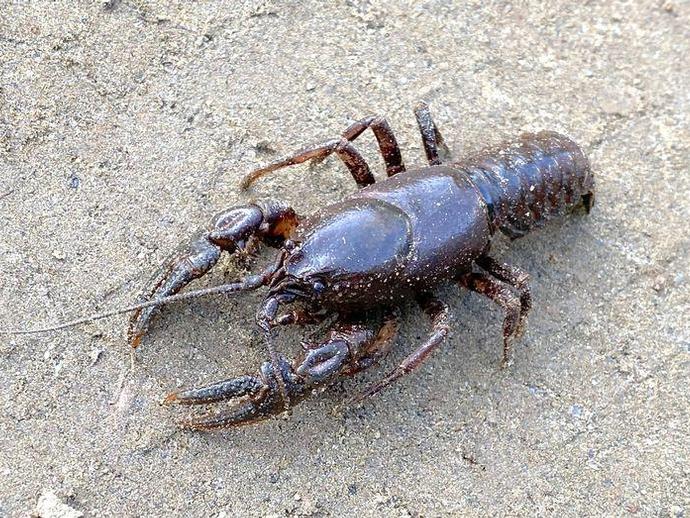September 10, 2021
Ben here with the Friday edition of #BenInNature presented by our friends at Carter Bank & Trust!
Here's something a little unusual to close out the week! Not too long ago, VMNH Associate Curator of Entomology Dr. Kal Ivanov came over to my place to look for bugs, and while we were walking along, we spotted this crayfish (family Cambaridae) strolling down the middle of my road without a care in the world. It's not the first time I've seen a crayfish walking on land; on a rainy night a couple years ago, one strolled right up to my back porch! Why would a critter that seems to spend its time in creeks and streams suddenly decide to take to dry land?
There are many, many different species of crayfish, with the greatest diversity found in the southeastern U.S. (more than 330 species!). In southwest Virginia, the majority of crayfish species stick to bodies of water, but they will occasionally move to dry land if they decide to seek out a new body of water to call home. While crayfish have gills and need water in order to survive just like fish, invertebrates don't need nearly as much oxygen as fish do. As a result, they can survive on land for a while if need be!
There are many species of crayfish that don't even live in bodies of water at all. In areas with high water tables, these species dig into the soil and live underground; you can spot them pretty easily because they create little chimneys that rise up from their burrows. In fact, some species such as the prairie crayfish might live miles away from the nearest body of water. Keep your eyes peeled when you're out walking!
ABOUT #BenInNature
Social distancing can be difficult, but it presents a great opportunity to become reacquainted with nature. In this series of posts, Administrator of Science Ben Williams ventures outdoors to record a snapshot of the unique sights that can be found in the natural world. New updates are posted Monday - Friday, with previous posts highlighted on the weekends. This series of posts is made possible thanks to the support of VMNH Corporate Partner Carter Bank & Trust (www.cbtcares.com).
NATURE PHOTO IDENTIFICATIONS
If you discover something in nature that you would like help identifying, be sure to message us right here on Facebook with a picture (please include location and date of picture) and we'll have our experts help you identify it!

 Hours & Admissions
Hours & Admissions Directions
Directions

